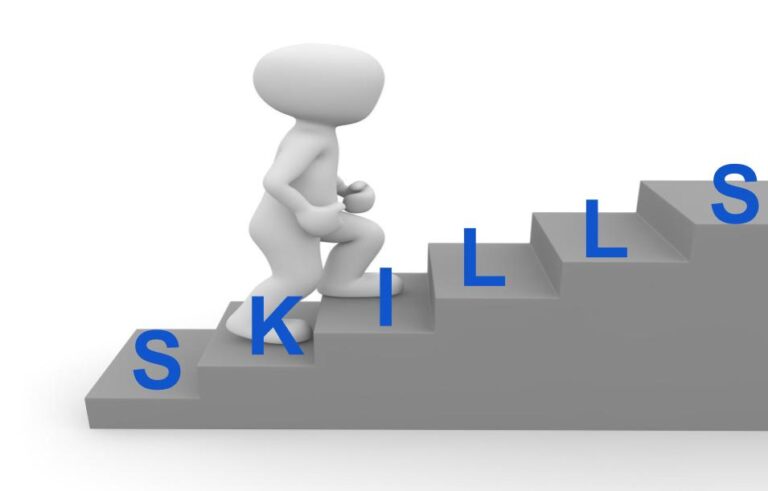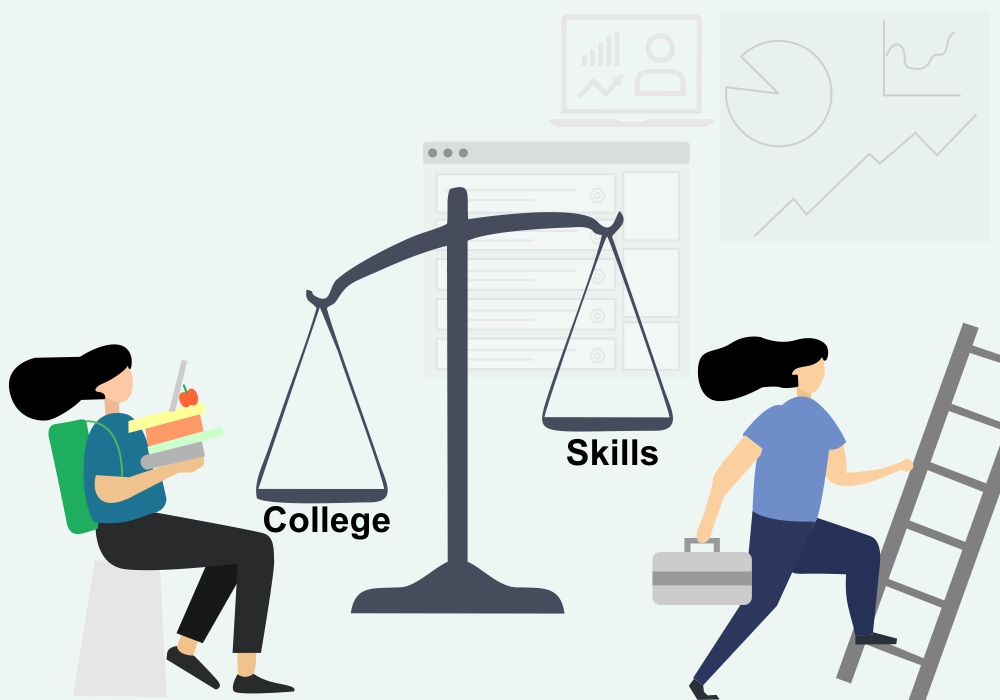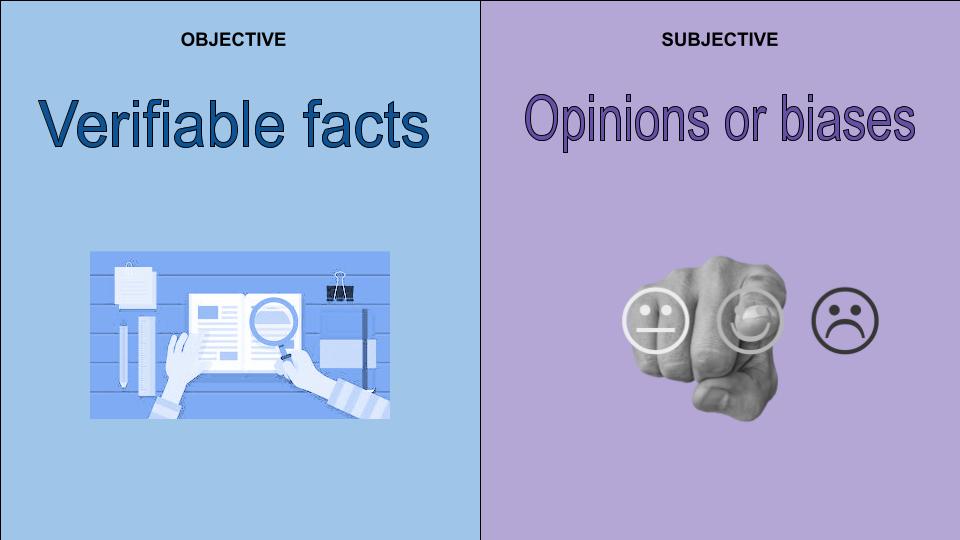How Skill Based Hiring Creates More Equitable Hiring Outcomes
The 2020s saw three major disruptions: A global pandemic, a digital revolution in the form of generative AI, and the rise of hybrid/remote work and globally distributed teams. All this interplay of phenomena has effectively transformed the way we work and the need to move to skill based hiring.
The pandemic has caused workers to rethink their career trajectories, work conditions, and long-term goals. And as the market rebalances from a great resignation wave, employers are convinced that employees are not just looking for temporary fixes like salary hikes. What they want is schedule flexibility, career mobility, better work-life balance and most importantly, meaningful work. That means work where they get to utilize and expand their skill-set and solve new meaningful problems. Also, it means that candidates want to work for companies where they not just feel included but feel celebrated, valued and fulfilled. According to research from BetterUp, a staggering nine out of 10 employees are willing to take a lower salary for more meaningful work and better belonging.
Similarly, with the successful implementation of hybrid work, companies are now moving to a more agile, skill based model, wherein work is being split into projects, tasks, gigs and assignments etc. handled by remotely connected, multi-departmental teams, where any individual with the right skills and specializations, can transcend their background, educational qualifications, job titles, domain etc. to become a part of any project, or role that requires that particular or adjacent skill-set. The focus is completely on the unique skill-sets or specializations candidates bring to the table.
Such creative multidisciplinary convergences often result in diverse, global teams, and it has become clear that this diversity is leading to unprecedented innovation and performance. For example, research from Mckinsey has shown that gender-diverse teams are 25% more likely to financially outperform less diverse companies, while ethnically diverse teams are 36% more likely to do so, More and more research is piling up on how Skills-based organizations are more than 100% more likely to place talent effectively and 98% more likely to retain high performers. However, the major deterrent to accessing a global pool of talent is inequity in hiring which continues to be a serious problem.
Rise in skill-based hiring

To counteract this problem, more and more companies are relying on skills-based hiring whereby candidates are hired based on verified credentials and demonstrable, or quantifiable skills, rather than relying on traditional must-haves such as college degrees, ambiguous and vaguely defined requirements and subjective modes of evaluation like resumes. Not only are the traditional modes of evaluation proving to be inefficient, but are serving as unnecessary gate-keeping mechanisms that go against the grain of true equity and merit. Moreover, the traditional methods have also been enabling hiring bias- which is the tendency of recruiters to unconsciously favor candidates with similar or familiar backgrounds, education, and work experience.
For example, a landmark study found that, in a scenario where two resumes, which were identical to the T, except for the names, the White American-sounding names received 50% more callbacks for interviews than African American ones.
Similarly, a study published in Proceedings from the National Academy of Sciences found that recruitment managers would choose male candidates over female candidates two out of three times, even if they were aware they were hiring the less skilled option.
Skill based recruiting as an effective deterrent to hiring bias.

In a survey conducted by Testgorilla, 54.3%of the interviewed candidates supported skill-based assessments because they value speed, communication, and transparency.
Creating job descriptions that are skill-based can vastly improve application rates and can increase the number of non-traditional candidates to get their foot in the door. This is because people from under-represented categories apply for a position only if they find themselves to be a complete fit to what is often an ill devised job description.
Here are a few ways how an average job description today might be alienating instead of inviting.
- Undue emphasis on qualifications and unreasonable work experience.
- Not giving a realistic description of actual tasks and responsibilities.
- No clear-cut sense of the cognitive, technical, social skills that the candidate should possess to do their job or how these skills will be evaluated.
- Company-centric tone rather than candidate centric.
Skill based hiring being an objective and practical methodology, does not rely on inequitable proxies like educational qualifications or work experience, instead, it focuses on what truly matters- demonstrable skills and task readiness. Today, 70% of Americans over the age of 25 do not have a college degree. Many of them are potential high-performers from racial minorities, or people with disabilities or veteran status, who might not have had access to costly higher-education opportunities and have acquired in-demand skills in non-traditional ways. By emphasizing skills and not college degrees in their job descriptions, employers encourage more applications from such candidates and thus create a more diverse and inclusive workforce.
Similarly, most traditional job descriptions are copy-paste efforts, where all similar job roles have identical descriptions, with hardly any realistic sense of the actual tasks and responsibilities associated with that particular vacancy. Most job vacancies are backfilling positions, and managers usually have a clear-cut idea of what the leaving person realistically did beyond the scope of generic requirements. For example, an incumbent graphic designer may have not only worked on the website redesign project, but may also have taken additional responsibilities such as managing the project timeline and coordinating with external vendors etc, but the job description for the position may not include such information, and this can contribute to candidate mishiring, employee dissatisfaction in the long run etc. Hence, it is important to give candidates a realistic expectation of the job, by saying, highlighting actionable KPIs that are expected from the candidate at the end of a month or quarter.
Objective in, Subjective out.

Skill based hiring is all about transparency, and the best methodology to ensure that the candidates were hired purely based on objective skill-evaluation and not on subjective impressions, completely eliminating the scope for hiring bias. And the crux of this methodology lies in delineating the technical, cognitive and social skills required for the tasks and how these skills will be assessed. For example, will they require external certifications, manager or peer testimonies, or will be required to take assessments or tests etc.
After all, the most vexing feature of the job descriptions have to do with ambiguous requirements that are purely subjective in nature. A few of the common culprits are stock phrases like “Must be a team player”, “comfortable with ambiguity”, “Ability to multitask” , “Excellent communication skills”,”cultural fit” etc. that do not give any sense as to how these will be relevant for the tasks at hand. For example, the requirement “excellent communication skills” for a high school teacher and for a data scientist would involve completely different skill-sets altogether. For a data scientist it would maybe translate as “Clearly and succinctly explain the results of data analyses and models to executives, managers, and other stakeholders who may not have a technical background”, while for a school teacher the skill would be to “Deliver clear and engaging lectures that effectively communicate complex ideas and concepts to students of all backgrounds and levels of understanding.”.
Such ambiguous statements and requirements regularly deter neurodivergent candidates, who may not be able to decode the contextual meanings of these ambiguous phrases and may be hesitant to apply when they encounter this. Also, such phrases, since they lack any objective value, easily contribute to subjective evaluations and hiring bias.
Skill-based hiring is closely aligned with DEI efforts of the company. A skill based job description is ineffective, if the overall tone of the JD is not inclusive. A lot of Job descriptions spend valuable real estate on sections about the company, or on long lists of irrelevant mast-have skills rather than on employee benefits and value propositions. Inclusion of a strong DEI statement that also asserts your commitment to skill-based hiring can further encourage people from underrepresented categories, and non-degreed candidates to apply.
Also, it will help to clearly distinguish skills that are needed on the first day on the job, and skills that can be learned, with time and/or upskilling, while on the job.
Skill based Assessments/Interviews.

Job description arguably is only the first stage in a skill based hiring process. To keep the momentum going, it is important to ensure that the entire candidate selection process is also objective and skill-based. Few ways to achieve this are-
- Relying on AI based testing to rank applicants based on how their skills correlate with the requirements and responsibilities of the role
- Using a skill-based rubrics to score candidates in interviews.
- Incorporating unconventional forms of testing other than interviews like tests, code challenges, simulations, role play and more — to assess soft and hard skills etc.
Historically, interviews have not favored underrepresented groups, including women and neurodivergent candidates, hence multiple ways of assessments provide equitable opportunities for candidates to prove their competence. Moreover, using such objective assessments can also empower candidates with measurable feedback which helps them polish their skills and enhance their abilities before applying for other job positions.
AI for skill-based equitable hiring.

Generative AI, such as krita.ai tailor made AI models, has the potential to revolutionize skill- based hiring. Using AI solutions help automate repetitive HR tasks, such as pre-screening candidates, sending follow-up messages, and providing information etc. It can also eliminate human errors, improve accuracy, and transparency. Here are a few ways how generative AI can aid recruiters at all stages of full lifecycle recruitment.
- It can help create targeted, skill-oriented job descriptions sans ambiguous language or unconscious bias.
- Generative AI can be used to automatically create recruitment texts or candidate communications, such as personalized and relevant candidate outreach/nurturing messages, social media posts targeted at the right candidate-profile, with a clear and consistent employer branding.
- Ai can even be used to conduct initial candidate screening and assessments, such as personality and aptitude tests. This will ensure that you are evaluating your candidates’ skills and abilities more accurately. And that the entire process is data-driven.
- It can also help candidates achieve an overall positive experience for the candidates, by enabling real-time updates on the status of their applications. General queries etc.
Skill-Based Hiring is a positive-sum game.

Perhaps the most observable benefits of skill-based hiring is the drastic reduction in mis-hire, time-to-hire, cost-to-hire etc. But the most salient benefit seems to be that skill-based hiring contributes to longer employee retention and satisfaction. For example, 94% of entry-level employees say they are more likely to stay in a company that invests in their career, and gives up-skilling/re-skilling opportunities. This is why many companies are building comprehensive learning pathways to help their own employees and the population in general move to career paths that best suit them. This strategy is indeed a win-win because investing in employee skills often eliminates the need for external hires, by building talent pools within the company, or by identifying internal talent with adjacent skills.
The adoption of skills-based hiring thus provides organizations with an impartial, equitable, and precise means of attracting a diverse pool of talent while eradicating hiring bias at every stage of the recruitment process.
At the end of the day, people want to work where they feel the organization is contributing to their growth and realization of their potential, and where they feel seen, valued, and respected. Instead of turning everyone into the same kind of contributor through standardizing them in jobs, skills-based organizations let people’s uniqueness shine through, with work tailored to their strengths.
Happy Hiring!!

